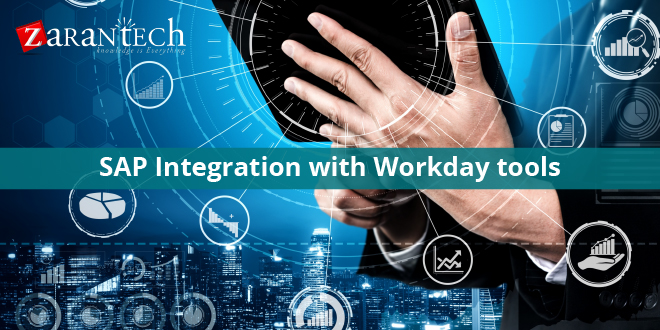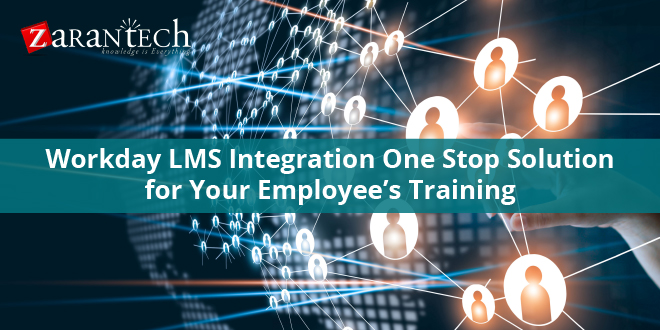Common Workday Integration Challenges and How to Tackle Them!
Category: Workday Integration Posted:May 19, 2020 By: Alvera Anto
Integration projects have a negative online reputation in the technology world. They can be costly, taxing, and frequently cause a result other than the one you set out to achieve. Some research studies reveal that 70 percent of all system integration tasks fall short. But you don’t have to be a statistic!
In this article, we will cover the difficulties to think about (and allow you to know the services) before you get started with your Workday Integration project. Let’s dive in.
What is Workday HCM?
The Workday Human Capital Management (HCM) Suite is a cloud-based solution that consists of numerous applications that integrate recruiting, talent management, benefits, payroll, economic, etc. into a single platform. In many cases, services using Workday need to be able to integrate data from a third-party supplier or an Enterprise Resource Planning (ERP) system. As well as since doing so can be challenging, you’ll require to establish a technique for exactly how to incorporate Workday with your existing (and also possibly future) options, before you begin executing Workday as a service.
You may also like to read Workday Integrations Scheduling Guidelines
Common Challenges of Workday Integration
Integrating Workday into your current IT environment requires a major financial investment in time, resources, and money. Below are a few major issues you might encounter when integrating Workday with various other options:
- Increasing IT expenses
- Working with various (and also diverse) systems and technologies
- Continuous maintenance and support cycles for Integration
One trend we’ve seen in the integration space is businesses use point-to-point solutions to connect and integrate data between Workday and various other systems, solutions, data resources, and APIs. This develops a direct connection between endpoints, and everything seems perfect, right?
Well, point-to-point links are best up until you need to make changes … which call for an experienced programmer … which can slow down the process and leave links vulnerable to breakage. (As well as the intricacy of the integrations and countless endpoints that require to be linked.) The absence of dependability and scalability make point-to-point integration a less-than-ideal service for this type of job.
Integration Considerations to Bear in Mind
Besides assessing whether point-to-point options will help your Workday integration, there are a couple of other aspects you’ll want to think about when you’re servicing your integration process. Here are simply a few of the important questions you’ll require to ask on your own, including :
Will I Have Real-time Connectivity?
For your Workday integration to succeed, you must have real-time connectivity. Not just it is useful in a wide variety of circumstances, but for some situations (HR requires to end a worker, as an example) attempting to do without real-time connectivity is simply inviting trouble.
Is There an On-premise Connectivity?
In today’s hybrid IT setting, your integration platform has to enable indigenous assistance for both cloud-based and on-premise systems. A solution that looks terrific at first blush but doesn’t think about where your systems live is not the solution for you.
Are there any Scalability Limitations?
As any growing business knows, scalability is everything. Ensure that your integration system can deal with a high volume of data flow which there are no limits on the variety of concurrent integration processes. Or else, a system that works well when times are slow may stop working when things pick up speed.
Do I Have Enterprise Extensibility?
An integration platform with limitations on the number of applications and integration circumstances can handle is bound to create problems down the road. Better to stay with a service that has your back, despite how sticky things get.
Difficulty + Expertise = Solution
Workday uses a couple of services when it comes to integration, including the use of standards-based user interfaces when feasible, demanding even more out-of-the-box integration solutions from its partners, and provide individuals with a clear method to help them take advantage of cloud infrastructure (which allows them to lighten the load on their IT personnel).
Workday’s approach is handy, but as you recognize, getting any kind of big task done properly and promptly– all while maintaining your other responsibilities– can be a multitasking headache. The best method to prepare for one? Partner with Workday experts who can ensure you get it done right the very first time.
Go through our Workday Integration Interview Questions to crack the Interviews.
Bottomline
I hope our best practices help you to schedule Workday Cloud Integrations seamlessly. Also, at ZaranTech we offer an online training program on Workday Integration. If you’re planning to make a career in this field, you’re in the right place. We offer a self-paced training program conducted by experienced and renowned SMEs present in the industry. Feel free to browse through our course page.
Happy learning!




 99999999 (Toll Free)
99999999 (Toll Free)  +91 9999999
+91 9999999